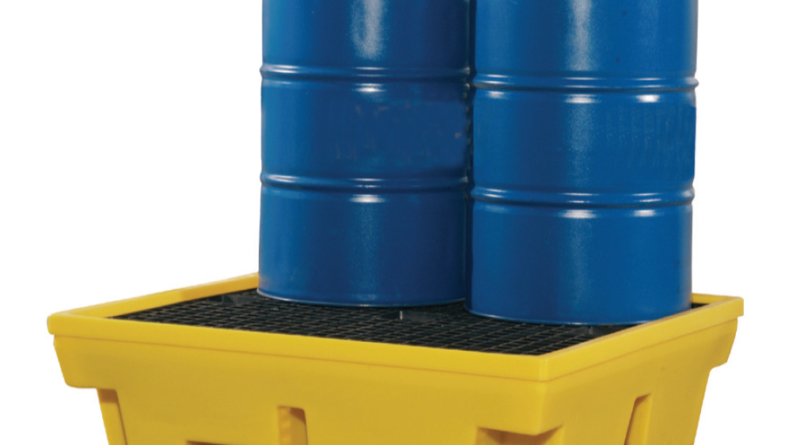How to Use Spill Pellets – A Comprehensive Guide
Spills are common in industries or workplaces that involve handling liquid materials, especially oils and chemicals. If not addressed properly, these spills can be dangerous. In laboratories or manufacturing units, a small spill can stop the whole process. Therefore, you need to respond to them immediately to stop them from spreading.
You can rely on spill pellets to deal with them. They will absorb and contain the spill, mitigating the risk of problems associated with it. Now, the main concern is how to use these pallets. Don’t worry! We’ve got you covered. In this post, we will tell you how to appropriately use spill pellets.
A Stepwise Guide to Use Spill Pellets
Step 1: Assess the Situation
You cannot apply any absorbent material without assessing the situation. You need to check the size of the spill and the potential risks associated with it. Apart from that, you should also pay attention to the spilled material. This assessment will help you in many ways. It will help people wear the appropriate safety gear. Apart from that, it also assists in developing the best plan to handle it.
Step 2: Choose the Right Spill Pellets
There are different types of spill pallets that absorb different materials. You have to select the appropriate one based on the nature of the spill. The following are some most common types of these spill pellets. Let’s go through them.
Oil-Only Spill Pellets: They are specifically designed to absorb oils, gasoline, and other petroleum-based products. They repel water which makes them useful for cleaning up oil spills on water.
Universal Spill Pellets: They can absorb all kinds of liquids, including water, oils, and chemicals. They are ideal for facilities handling multiple substances.
Hazardous Chemical Spill Pellets: These pallets are specifically made to neutralise and absorb hazardous chemicals such as acids and alkalis. These are essential for labs or chemical plants where highly reactive substances are handled.
Biodegradable Spill Pellets: If you are focusing on environmental sustainability, these are your best option. They absorb spills while being eco-friendly and biodegradable. They are particularly effective for absorbing organic liquids.
You can choose any of the aforementioned types based on spill material and its location.
Step 3: Contain the Spill
After selecting the appropriate pallets and doing safety gear, you need to contain the spill. Without doing so, it will spread and cause damage in a relatively large area. You should aim to prevent the spilt liquid from spreading further, especially into water sources or sensitive areas.
You can use spill socks or barriers around the perimeter of the spill to prevent it from expanding. Apart from that, you should block drains using covers. It will prevent the spill from entering the drainage system. Doing so will make it easier to manage and prevent the spill from escalating into a major issue.

Step 4: Apply Pellets
When the spill is contained, it’s time to apply the spill pellets. You should sprinkle the spill pellets evenly across the entire surface. For larger spills, make sure to cover all areas to ensure maximum absorption. You should use enough pellets to fully absorb the liquid. For regular spills, a light layer will be enough. However, for larger spills or thick liquids like oil, a generous amount of pellets is necessary for maximum absorption.
Top Tip: If the spill is of a thick liquid, such as oil or grease, mix pellets with the liquid to improve absorption. Make sure you follow the manufacturer’s guidelines regarding how much product to use for different spill volumes.
Step 5: Wait for Absorption
Spill pallets will not start functioning immediately. You have to wait for them to absorb the liquid. They begin absorbing the liquid almost immediately, but the total time for complete absorption will depend on the volume and type of spill.
Smaller spills may be absorbed in under a minute. Thicker spills can take a few minutes. Some pellets, particularly those designed for chemical spills, may take a little longer if neutralisation of harmful substances is required. Throughout this step, make sure the area is restricted to avoid personnel walking through the spill or disturbing pellets. It will affect their efficiency and you will not get the desired results.
Step 6: Collect and Dispose Pallets
Once spill pellets have fully absorbed the liquid, it’s time to collect them. You can use a shovel or dustpan to collect absorbent. Make sure you collect all the material. If the spill is hazardous, thoroughly clean the whole area to prevent any residues. After that, you have to dispose of the collected pallets. Make sure you use the appropriate approach to do so.
Now you know how to use spill pallets efficiently. Make sure you follow all the aforementioned steps to get the desired results. Never come close to the spill without wearing appropriate safety gear.

